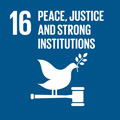- Docente: Omar Barbieri
- Credits: 5
- SSD: L-LIN/14
- Language: German
- Teaching Mode: In-person learning (entirely or partially)
- Campus: Forli
- Corso: First cycle degree programme (L) in Languages and Technologies for Intercultural Communication (cod. 5979)
-
from Feb 18, 2026 to May 14, 2026
Learning outcomes
At the end of this module, students will be familiar with the problems of dialogue interpreting and will be able to assess ethically correct behaviour in that field; they will be able to use the basic strategies of dialogue interpreting between German and Italian in communicative situations simulating real professional practice.
Course contents
The main aim of the course is to provide students with the necessary tools to perform dialogue interpreting tasks while dealing with increasingly long and difficult speeches in Italian and German. Particular emphasis will be placed on note-taking and on the symbols used by students, as well as on the accuracy of the target speech, both in terms of intelligibility for recipients and in terms of compliance and content fidelity to the source text. Further learning outcomes: deepening one's knowledge on language and ethical problems related to interpreting, and acquiring a quite good ability to manage relevant strategies; improving one's capacity to understand and produce a wide range of increasingly difficult speeches in Italian and German through a smooth, spontaneous and possibly correct way of speaking; expanding one's specialized vocabulary pertaining to several sectors; strengthening one's spontaneous responsiveness to lexical or other problems that might arise during the interaction; non-verbal communication; memory-boosting exercises without note-taking.
Readings/Bibliography
Allaoui, R. (2005) Dolmetschen im Krankenhaus: Rollenerwartungen und Rollenverständnisse. Göttingen: Culliver.
Ausserhofer, A. (2010) Ich darf nix sagen, ich bin nur der Dolmetscher: Dolmetschen im Krankenhaus. Eine empirische Untersuchung. Düsseldorf: VDM Verlag Dr. Müller.
Binnewies, B. (2009) Interkulturelle Kommunikation als Herausforderung im Krankenhaus. Am Beispiel muslimischer Patienten. München: GRIN Verlag.
Bischoff, A. und L. Loutan (2000) Mit anderen Worten: Dolmetschen in Behandlung, Beratung und Pflege. Bern, Genf: Bundesamt für Gesundheit: Hôpitaux Universitaires de Genève.
Bührig, K., Durlanik, L. und B. Meyer (Hrsgg.) (2000) Dolmetschen und Übersetzen in medizinischen Institutionen. Beiträge zum Kolloquium „Dolmetschen in Institutionen“, 17.-18.03.2000 in Hamburg, Arbeiten zur Mehrsprachigkeit, Folge B (Nr. 9), Universität Hamburg: Sonderforschungsbereich Mehrsprachigkeit.
Buscha, A. e G. Linthout (1997) Geschäftskommunikation. Verhandlungssprache. Ismaning: Max Hueber Verlag.
Cinato Kather, L. (2014) Mediazione linguistica Tedesco-Italiano. Aspetti teorici e applicativi, esempi di strategie traduttive, casi di testi tradotti. Milano: Ulrico Hoepli Editore.
Corbeil, J.-C. und A. Archambault (2009). PONS Bildwörterbuch Der Mensch: Rund 1700 Begriffe in Bild und Wort, Englisch und Deutsch. Stuttgart: PONS GmbH.
Deschka, M. (2011) Lernkarten Grundwortschatz Medizin – 324 Karteikarten zum Einstieg in die medizinische Fachsprache: Fachbegriffe, Fremdwörter & Terminologie. Melsungen: Bibliomed Medizinische Verlagsgesellschaft mbH.
Jain, F. (2010) Migration – Gesundheit – Soziale Arbeit: Dolmetschen im Gesundheitswesen. Düsseldorf: VDM Verlag Dr. Müller.
Meyer, B. (2004) Dolmetschen im medizinischen Aufklärungsgespräch: eine diskursanalytische Untersuchung zur Wissensvermittlung im mehrsprachigen Krankenhaus. Münster: Waxmann.
Muthny, F. A. und I. Bermejo (2008) Interkulturelle Medizin: Laientheorien, Psychosomatik und Migrationsfolgen. Köln: Deutscher Ärzte-Verlag.
Pöchhacker, F. and M. Shlesinger (2007) Healthcare Interpreting. Discourse and Interaction. Amsterdam/Philadelphia: John Benjamins.
Russo, M. e G. Mack a cura di (2005) Interpretazione di trattativa. La mediazione linguistico-culturale nel contesto formativo e professionale. Milano: Ulrico Hoepli Editore.
Schmidt-Glenewinkel, A. (2013) Kinder als Dolmetscher in der Arzt-Patienten-Interaktion. Berlin: Frank & Timme.
Srivastava, R. (2006) The Healthcare Professional’s Guide to Clinical Cultural Competence. Toronto: Mosby Canada.
Strack, R. (2015) Grundwortschatz für Pflegeberufe. 11. aktualisierte Auflage. Stuttgart: W. Kohlhammer GmbH.
Wendt, S. (2012) Warum die Medizin mit ihrem Latein nicht am Ende ist: Sprachgeschichtliche Entwicklung der medizinischen Fachsprache zu ihrer heutigen Form. München: GRIN Verlag.
Teaching methods
Lectures will be given in interactive mode: students will be asked to act as interpreters during interpreting sessions prepared by the lecturer, after which they will receive feedback on the degree of success of the interaction. Moreover, further insights on grammar, vocabulary and professional ethics will be provided during the course.
Assessment methods
The final exam consists of an interpreting test: students will act as interpreters in a structured dialogue between the lecturers on a subject dealt with during the course. Furthermore, they will be asked to submit a glossary divided by topics.
Students with specific learning difficulties (SpLD) or with disabilities that can affect their ability to attend courses are invited to contact the University service for students with disabilities and SLD at the earliest opportunity -- ideally before the start of the course: https://site.unibo.it/studenti-con-disabilita-e-dsa/en/for-students. The University service will suggest possible adjustments to the course work and/or exam, which must then be submitted to the course leader so they can assess their feasibility, in line with the learning objectives of the course. Please note that adjustments to the exam must be requested at least two weeks in advance.
Teaching tools
Further relevant materials (such as vocabulary lists, transcripts of the interpreting sessions, articles, audio files) may be distributed or made available by the lecturers during the course and/or on Moodle.
Office hours
See the website of Omar Barbieri
SDGs




This teaching activity contributes to the achievement of the Sustainable Development Goals of the UN 2030 Agenda.
